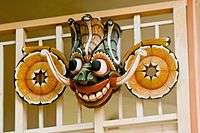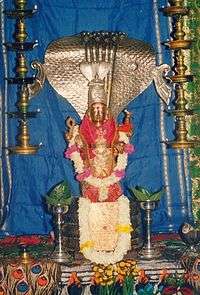Ancient clans of Lanka
Several different indigenous clans lived in the island of Sri Lanka during the pre-Vijaya era (before 505 BCE). These clans of Sri Lanka and the mystical kingdom of Lanka were mentioned in the great epics of Mahabaratha, Mahavamsa, Manimekalai, Ramayana and Sangam. [1] It is believed that four main clans lived in Sri Lanka before king Vijaya explored the island. The four clans are Yaksha (Yakku), Naga, Deva, and Raksha (Rakus)[2] . It is believed that these names were attributed metaphorically to indicate their profession: Yaksha people were believed to inhabit in the mountains where they had used monsoon wind to mould iron, Raksha people were supposed to be farmers who used the steel products of the yaksha people in their farming endeavours (the name Raksha is derived from the two syllables ra + kus, in Sinhalese kus means "stomach"; rakus literally means the people who fulfill hunger or the people who provide rice, the staple food of the Sinhalese people), the Naga people were believed to be traders, the Deva people were the rulers, the people who used to be the link between the Raksha people and yaksha people. The religion of the natives is known that the Naga culture were serpent-worshippers and the Yakka culture were spirit worshippers.[3] Even today, the Sri Lankan culture has some elements that originated from the culture of the Yakkas and Nagas. The majority of the native population were farmers and cattle herders. They had knowledge about healing arts (ayurvedic), built irrigation systems and temples. There were trade relations and royal intermarriage between the indigenous people of Sri Lanka and their neighbors in the Indian kingdoms.


The era before the arrival of Prince Vijaya was not well documented so there is not much known of the previous native rulers of Sri Lanka. Ravana the mythical king of Lanka kingdom is considered the most famous and most powerful native king who ever reigned in Sri Lanka. The native rulers of Sri Lanka were later supplanted by the Indian rulers who came from Kalinga and South India.
See also
References
- Ordhendra Coomar Gangoly. The art of the Pallavas, Volume 2 of Indian Sculpture Series. G. Wittenborn, 1957. p. 2.
- "The origins of the Sinhala Race". island.lk. Retrieved 9 December 2018.
- http://www.srilankatailormade.com/why-sri-lanka/history-people-of-sri-lanka/people-of-sri-lanka/